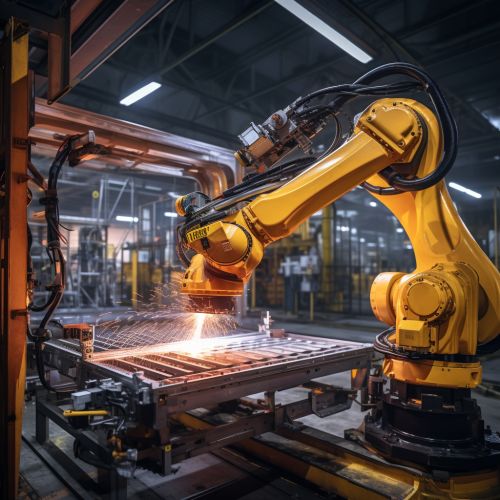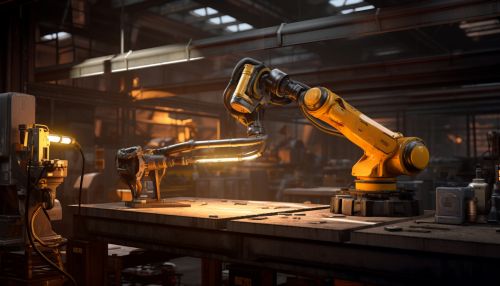Advances in Machine Vision for Robotic Automation
Introduction
Machine vision, a subset of computer vision, has seen significant advancements in recent years, particularly in the field of robotic automation. Machine vision systems enable robots to perceive and understand their environment, thereby enhancing their ability to perform complex tasks with a high degree of precision and efficiency.


Machine Vision in Robotic Automation
Machine vision is a critical component of robotic automation. It provides robots with the ability to see and interpret their environment, which is essential for tasks such as object recognition, navigation, and manipulation. Machine vision systems typically consist of a camera or sensor, a processor, and software algorithms that interpret the captured images.
Object Recognition
One of the primary uses of machine vision in robotic automation is object recognition. This involves identifying and classifying objects within an image or series of images. Advanced machine vision systems can recognize a wide range of objects, from simple geometric shapes to complex, multi-dimensional objects.
Machine vision is also crucial for robot navigation. Robots equipped with machine vision systems can navigate complex environments with ease, avoiding obstacles and efficiently reaching their destinations. This is particularly useful in industries such as warehousing and logistics, where robots are often required to navigate large spaces and handle a variety of objects.
Manipulation
In addition to object recognition and navigation, machine vision enables robots to manipulate objects with a high degree of precision. This is particularly important in industries such as manufacturing and assembly, where robots are often required to handle delicate or intricate objects.
Advances in Machine Vision for Robotic Automation
The field of machine vision for robotic automation has seen numerous advancements in recent years. These advancements have not only improved the capabilities of existing systems, but have also opened up new possibilities for robotic automation.
Improved Image Processing
One of the most significant advancements in machine vision is the improvement in image processing techniques. Modern machine vision systems can process images much faster and more accurately than their predecessors, enabling them to perform complex tasks more efficiently.
Deep Learning and Artificial Intelligence
The integration of deep learning and artificial intelligence (AI) into machine vision systems has greatly enhanced their capabilities. These technologies enable machine vision systems to learn from experience and improve their performance over time, making them more adaptable and efficient.
3D Vision Systems
The development of 3D vision systems is another significant advancement in machine vision. These systems capture three-dimensional images of their environment, providing a much richer and more detailed view than traditional 2D systems. This allows robots to perform tasks that require a high degree of spatial awareness, such as picking and placing objects in a three-dimensional space.
Future Trends in Machine Vision for Robotic Automation
The field of machine vision for robotic automation is expected to continue advancing at a rapid pace. Several trends are likely to shape the future of this field, including the further integration of AI and deep learning, the development of more advanced 3D vision systems, and the increasing use of machine vision in a wider range of industries.
